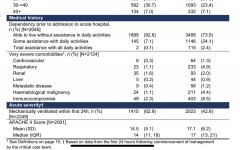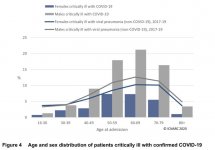This was written by written by Stuart McDonald, Head of Demographic Assumptions and Methodology at Lloyds Banking Group which is probably worth reading and discussing. It dispels some of the falsehoods being disseminated influencing how people view the current situation and the level of risk danger ahead with future actions being discussed.
I wont add anything to it, I'll you can make up your own mind. It's not an attempt to to make or spread a political point, it's with the same intention I've had from when I first joined this thread, which is to try and keep as many people safe as possible and help save as many peoples lives by countering narratives that are being put out that could end up costing lives by people who have their own agenda, which may not be entirely in everyone's best interest. I'll leave the rest to Stuart, it's up to you if you believe him or not, if you think he's qualified to make these statements and , there is a link to the report at the bottom.
There’s been a bit of an unpleasant and inaccurate narrative over recent days that the majority of COVID-19 deaths were people who were “at death’s door” in any case. That they died “with” rather than “of” the disease. I want to address that. I’ll refer to yesterday’s update from the Intensive Care National Audit and Research Centre (ICNARC).
The first thing that jumps out from the medical history section of Table 1 is that 93% of those critically ill with COVID-19 were “able to live without assistance in daily activities” prior to developing the disease. That typically suggests reasonable health.

Secondly, just 7% of 2,124 intensive care admissions had “very severe comorbidities”. That’s significantly less than typical viral pneumonia patients (as illustrated in table 1)
Lastly, for now, the age distribution. Most critical cases are aged between 50 and 80. People of this age, without severe comorbidities, could reasonably have expected to have years of life ahead of them before they contracted this disease.

There‘s a danger of drawing conclusions from ICU admissions that I ought to bring out. Given capacity limits there will inevitably be some triage going on, ie admitting those with the best chance of survival. This will skew the data to some extent.
Still, this data covers all admissions from the start of the epidemic until 3 April. For much of that period we are told that spare capacity was available so this data should not be skewed too much away from the typical critical case
Hopefully this goes some way to addressing the false narrative that these people would have died soon anyway, and we’ll hear rather less of it from journalists and commentators who ought to know better
Full report




